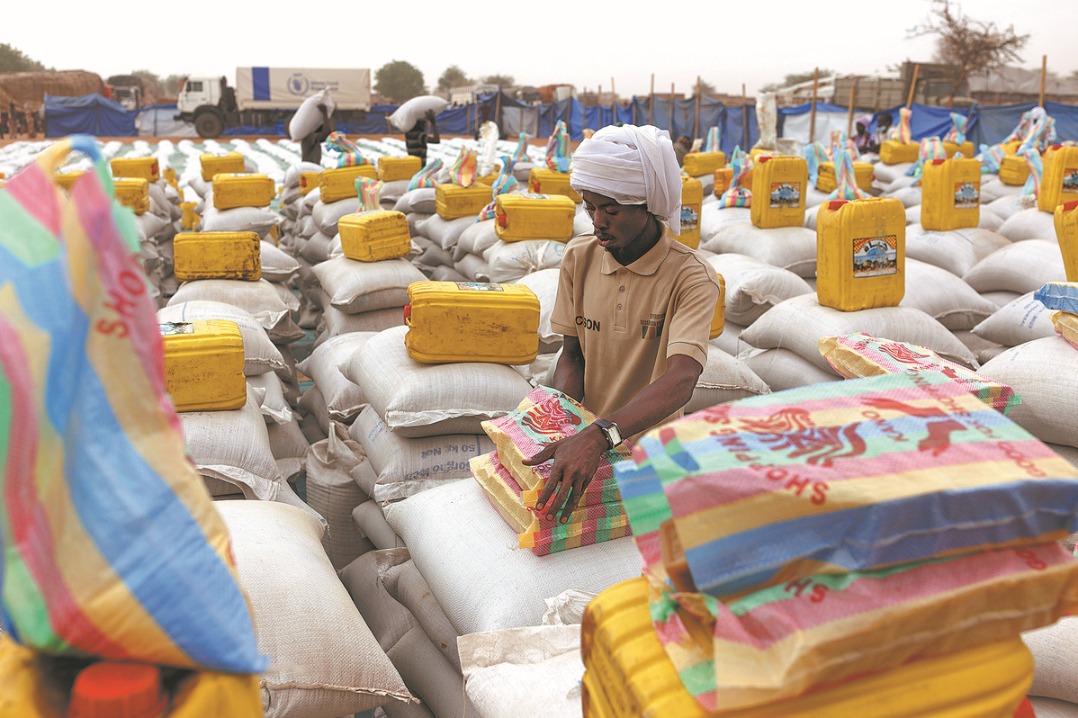Funds for forests

Green finance needed to safeguard all types of forests and the world's terrestrial biodiversity

Forests, covering 31 percent of the Earth's total land area, are home to about 80 percent of the world's terrestrial biodiversity, feed over 25 percent of the world's population, and act as the most productive land-based ecosystems. In 2020, the total carbon stock in forests was 662 gigatonnes, making forests the second largest storehouse of carbon to mitigate climate change after the oceans.
Global forestry has faced increasing challenges in the past few decades, such as deforestation and forest degradation, as a result of population growth, poorly planned and constructed infrastructure, other unsustainable activities and natural disasters. According to the Global Forest Resources Assessment 2020, which was released by the Food and Agriculture Organization last year, the world has lost around 420 million hectares of forest land to other land uses since 1990.
In response to this crisis, sustainable forestry management, which the United Nations defines as a dynamic and evolving concept that aims to maintain and enhance the economic, social and environmental values of all types of forests for the benefit of present and future generations, is an effective way to strike a balance between forest resources demand and conservation in the long term.
Managing forest resources is fraught with various uncertainties and risks. The situation is even worse in some forest-rich developing countries, because of unstable governments and ineffective administration, inadequate legislation and ambiguity of ownership, currency risks, lack of capacity and technology, and distorted markets.
As matters stand now, 73 percent of the world's forests are public-owned. This explains why public-driven finance is currently the main source for forest-related activities in many countries. Approximately, $400 million to $1.2 billion of official development assistance is the estimated annual investment in forestry sectors.
Since the 1990s, there has existed a significant funding gap for sustainable forestry investment. The FAO has estimated that $67 billion of investment in sustainable forest conservation and management is needed per year.
Green finance is regarded as an accelerator to address the market failures and inefficient resource allocation, and is recognized as one of the core pillars in natural capital investment. The main financing sources for sustainable forestry include public finance-national public finance, official development assistance, multilateral and bilateral development banks-and private finance. Official development assistance plays a significant role in leveraging resources for sustainable forest management, especially in many low-and middle-income countries. Green financial standards or systems have also been established to enhance environmental and social safeguards, strengthen disclosure, and enrich green financial products and services and pivotal programs.
Besides, to boost sustainable forestry operations, some other nascent financing instruments or mechanisms have been produced and broadened. The Clean Development Mechanism and the Reducing Emissions from Deforestation and Forest Degradation in developing countries, under the UN Framework Convention on Climate Change, have raised essential expectations for forest-released financing.
The Global Environment Facility, the Green Climate Fund and other innovative dedicated funding are regarded as important financing mechanisms for forest conservation.
The international forest carbon trading markets are developing rapidly and becoming crucial potential financing mechanisms to promote afforestation or reforestation activities worldwide. Moreover, the two mainstream operational forest certifications, the forest stewardship council and the program for the endorsement of forest certification, play a fundamental role in ensuring sustainable forestry practices. Some nongovernmental or philanthropic organizations, such as The Nature Conservancy, World Resources Institute and World Wildlife Fund, are also key players in leveraging resources into sustainable forestry activities.
Since 2015, the Chinese government has committed to increasing the country's forest stock volume by an estimated 4.5 billion cubic meters by 2030, and enhancing the nation's capacities and mechanisms to reduce carbon emissions through forest management. The ambitious vision of peaking carbon emissions before 2030 and achieving carbon neutrality before 2060 will be the two effective means to leverage green finance for the development of sustainable forestry.
Against such a backdrop, the current financial resource flow into sustainable forestry practices is significant but inadequate. At present, the main green financial products and services include the forestry policy green loans and green bonds from the policy banks, the central or local government budgets, and commercial banks. Most of the funds and services flow to support the construction of national forest reserves, promoting the development of commercial forests and related industry. Some other green financial tools such as forest-related green insurance and securitization of forestry assets are still at an early stage. China is also exploring public-private partnerships, mobilizing credit financing through the pledging of usufruct, as well as compensation payments for ecological forests.
For China, the structural and operational barriers of forest-based activities should be mitigated, with the scaling up of green finance and the establishing of more innovative financing mechanisms, as well as broadened third-party market-based participation in forestry assets assessments. Additional financial value (non-market services) should be accounted and commoditized, the private sector and capital markets should be educated on the profitable and ethical attraction of investment in sustainable forestry, and international cooperation should be enhanced.
In the post-pandemic era, financing sustainable forestry is a key component of "the green and sustainable recovery, support resilience and build back better" strategy of the international community. This year, two milestone events, COP 26 of the United National Framework on Climate Change and the COP 15 of the Convention on Biological Diversity, will be held to push forward practical responses to the climate and biodiversity crises, in which green finance has a vital role to play in safeguarding the world's forests.
Yao Jingran is a program officer of the Development Program at Greenovation Hub. Xu Jiayi is the lead of Biodiversity and Finance at Greenovation Hub. The authors contributed this article to China Watch, a think tank powered by China Daily. The views do not necessarily reflect those of China Daily.


































